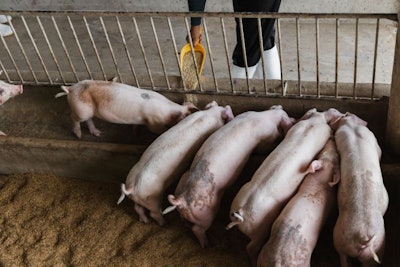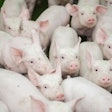
There are several approaches to formulating feed when phosphate is too expensive or not available.
The ongoing war in Ukraine has caused an unprecedented shortage in feed phosphates as most available phosphorus resources are directed toward plant fertilizers, which have also been equally impacted.
As a result, we have seen the price of monocalcium phosphate, for example, jump from about US$500 to more than US$1,500 per ton within months. Most experts believe this situation will not be reversed easily, especially while we continue to face the post-pandemic side effects on logistics and the surging inflation wave that appears hard to control. Thus, given the outlook of global affairs, this situation is probably going to take more than a couple of years (as some optimistic experts suggest) to sort itself out.
If common sense prevailed, when feed prices increased, the relevant prices for meat, eggs and milk would follow suit, but this is rarely the case. Even though we have seen considerable increases in consumer prices, these are not always transferred sufficiently at farm level to cover the extra cost for feed. As such, many smaller producers are facing bankruptcy, and phosphates are just one of the many feed ingredients that have increased in price. However, to continue our discussion on phosphorus, this nutrient was always expensive; now it is becoming prohibitive. Thus, I would like to share my experiences with low-phosphorus diets, a journey that started more than 25 years ago with my M.Sc. thesis at Kansas State University and continued throughout my professional career as a field nutritionist and consultant.
Although research institutions have been alerted to the need regarding the phosphorus situation, in commercial practice we need to act now with the knowledge and experiences already accumulated. In fact, a similar disproportional hike in phosphate prices happened several years ago when the mines in North Africa gave the first signs of depletion. With all that in mind, I offer the following suggestions for discussion.
-
Avoid sensitive or low-volume formulas
Although this might appear counterintuitive, some formulas are not worth tinkering with, while others should remain as is. Such an example is any layer formula that must not be touched as anything that has to do with bone/eggshell formation is already at a fragile balance. Another example is piglet diets where phosphorus is but a tiny fraction of the whole cost.
-
NRC minimum levels work well
During good times, safety margins are always generous and a sure way to avoid being blamed for anything that may cause health problems. Right now, such a luxurious approach is no longer warranted, especially for phosphorus that is not heat/storage sensitive. In fact, there has been little, if any, research to point to levels of phosphorus higher than those proposed by NRC for most species.
-
Reconsider phytase dosing
In theory, one dose of phytase will release about 0.1% extra phosphorus from phytate. Some products might do better or worse than that. During the previous spike in phosphate prices, it was a rule of thumb that a second dose of phytase will release about 0.05% additional phosphorus (50% of the first dosage). Assuming a corn-soy diet contains about 0.3% total phosphorus and only two-thirds of this figure (0.2%) are bound to phytate and thus susceptible to the act of phytase, with two doses of the enzyme phytase we already release 75% of the bound phosphorus (0.15%). Adding extra doses of phytase are questionable as we reach maximal biological efficiency (or inefficiency), although some recommend adding up to 10 times the normal dose (but at what cost?) to get as much as possible out of the remaining 0.05% bound phosphorus. Phytase has no effect on the other one-third non-phytate phosphorus.
-
Use ingredients rich in phytate phosphorus
Most common cereals contain about 0.2% phytate phosphorus and as such it is only the vegetable protein sources that can offer a bit extra bound phosphorus for higher doses of phytase to be effective. For example, if we switch from soybean meal to rapeseed/canola or sunflower meal, we get at best another 0.1% phytate-bound phosphorus on which phytase may act to release a fraction of phosphorus for the animal. However, this might not be economically feasible because phytase is not an inexpensive ingredient either.
-
Target non-sensitive feeds
It is generally assumed that during the last third of the growing period, a broiler or pig will consume two-thirds of its total feed allowance. This is where we can target phosphorus for margin fine-tuning. Research conducted at Kansas State University by Dr. J. Hancock revealed that finishing pigs require little in terms of additional phosphates in their feeds – something I came to attest personally during my graduate trial work and later under commercial conditions. Nevertheless, not all farms are identical and if such an extreme measure is followed, then it is best to discuss it first with your nutritionist.
Above everything else, I personally believe we must invest in re-evaluating the actual needs of all ages of pigs and poultry in terms of available/digestible phosphorus. Right now, many requirement estimates and dietary specifications are extrapolated either from other ages (pigs) or need verification (poultry) as they are no longer in step with modern genetics.

















